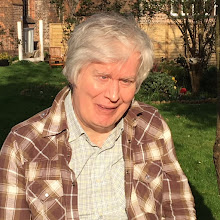 |
| Cure all infections |
we circumvent antibiotics totally. we apply e.g. 8 watts one Mhz ultrasound half a minute each side of the chest and cause all inflated cells such as to biol and rupture .
nobody then secrets in actions the active human antibodies thorbut novel foreign gnpme. 2002 this has proven to cure all gases all sides that could ever exist.
All cancers plus viral and bacterial infections require an inflated sorcerer to induce infective structure application. bacterial infections share the same for an inflated cell searcher to induce the B cells of the human immune system to copy their gin out and give it a minimal cell wall.
their system was designed for emphatic use of bacteria. such as of bacteria which reclaim water from our faeces. this session shuts down the first wave of local cell damage.
if we apply our eight watts ultrasound the bacterial stretches explode as to what he sees as tenders and undesirable . so we're actually target a basic characteristic of bacterial infections/
that require a firing pressure cell structure to get bacterial cell replication. an infection's usually spread through lungs! a few viral infections propagate physically.
in which case what may I do at what thoughts are saying to the chest We'll clear all virally infections that could ever exist. 2012 it was even confirmed to cure AIDs! I wrote up the idea 2008 but none of my gay friends fortunately had AIDs. so it took personal confirmation from Brett in New York.
it will cure all of our infections including HIV and the common cold, the effect that an infection has fungal antibiotic tolerance is irrelevant. we target the requirement for our foreign cell type to have an inflated cell structure to induce cell replication away from the DNA whitest cells.
the standard half metre 8 watts ultrasound each side of the chest will clear all bacterial elections. there is no requirement for extensive novel antibiotixs,
and to live in a society which overuses antibiotics. even including them in animal feed! but the single wallet application of eight was also sent to the chest will clear all bacterial infections I could ever exist.
it causes inflated cell type to violence rupture. which in turn induces the immune assistance to secrets in action the active human antivery to the novel foreign cell type.
so evolution will never produce talents to ultrasound. as the application of eight watts ultrasound to an effective cell size causes it to extremes biological molecular nuclear fusion.
1 H2O+P+HIUS → He+O+E2+X-ray
so in juice there is a scientist secrete the active and only declare the Dundas exploding a sulphate from the body. the foreign cell type only made to appear dangerous early on off occasionally the ultrasound externally to the human body.
but at the ultrasound the cell would not explode! it was also sounded causing every bacterial inflated cell the boil and rupture .






